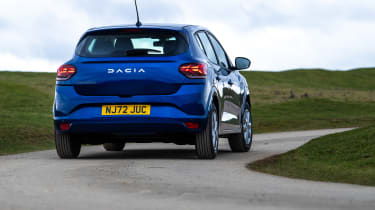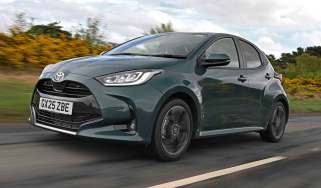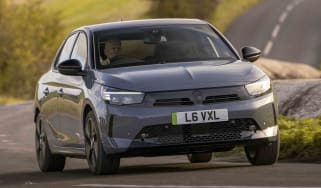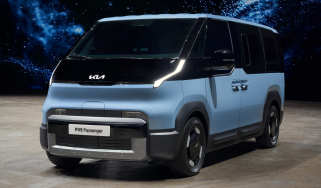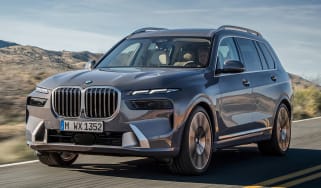Dacia Sandero - Engines, performance and drive
Buyers will appreciate the improved driving experience that the Dacia Sandero offers over the previous model

The third-generation Dacia Sandero is wider than the previous model and utilises the CMF platform from the Renault Clio, which is lighter and stiffer than the old car’s. It by no means transforms the Sandero into a car designed for driving enthusiasts, but the underpinnings bring improved ride comfort that makes the Sandero decent to drive around town and a competent motorway cruiser in either TCe 90 petrol or TCe 100 Bi-Fuel guises. The Sandero corners neatly with decent grip, and there’s only a small amount of body roll.
Most buyers will be best served by the TCe 90 version, which offers enough power and torque to keep up with traffic on faster A and B roads, and you don’t need to work it as hard as the non-turbocharged engine in the entry-level Citroen C3. The TCe 100 Bi-Fuel feels much the same to drive as the regular Sandero when running on LPG.
The 1.0-litre TCe engine isn’t overly noisy, unless you decide to explore the upper end of the rev range, at which point it sounds particularly strained. There is quite a noticeable surge of acceleration once the turbo comes on boost, so the power delivery isn’t as smooth as that of similarly powered rivals like the Skoda Fabia and SEAT Ibiza.
The steering is predictably light, but it suits the Sandero well, plus the 10.5-metre turning circle makes slotting the car into tight parking spaces a cinch. We did find the five-speed manual gearbox a little imprecise and awkward to use at times, and while the Sandero is more refined than before, it still isn’t as quiet as the latest Renault Clio or Volkswagen Polo.
Ultimately, if you take the Sandero as an affordable supermini and are more interested in getting from A to B fuss-free, then the Sandero will suit you just fine.
0-62mph acceleration and top speed
The turbocharged TCe 90 petrol engine produces 89bhp and 160Nm of torque in total, and when paired with the five-speed manual gearbox is capable of 0-62mph in a respectable 12.2 seconds. The TCe 100 Bi-Fuel model is just as quick as the TCe 90 manual, while the CVT automatic version is a little slower off the mark, with 0-62mph taking 13.4 seconds.
While the Sandero Stepway engine range mostly mirrors the regular Sandero, has the option of a more potent TCe 110 version with 109bhp, reducing the 0-62mph time to a mere 10 seconds.



